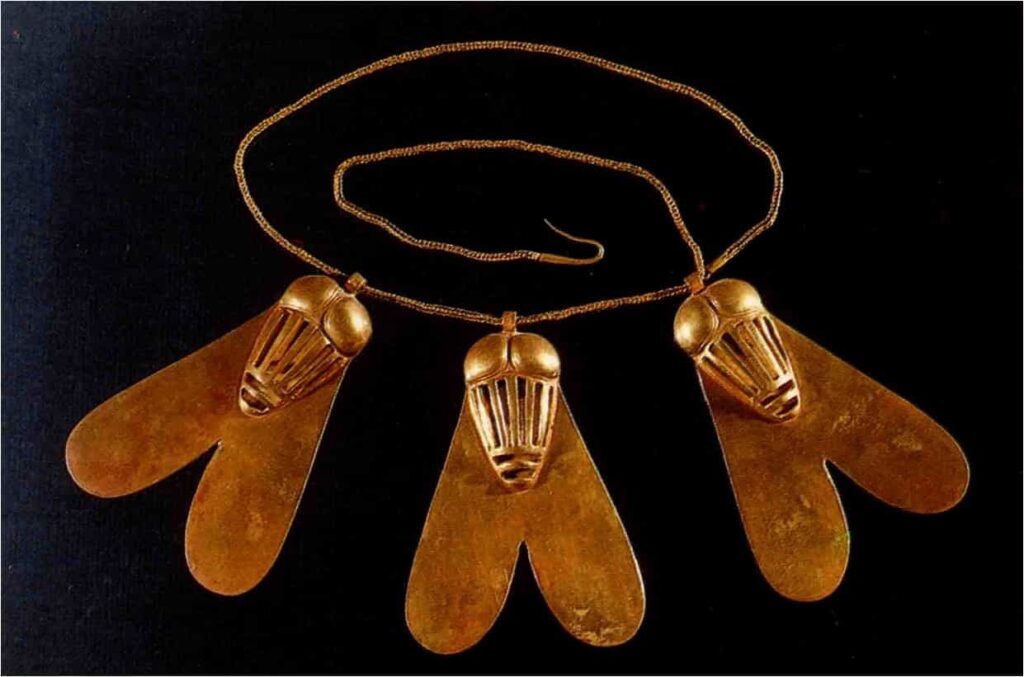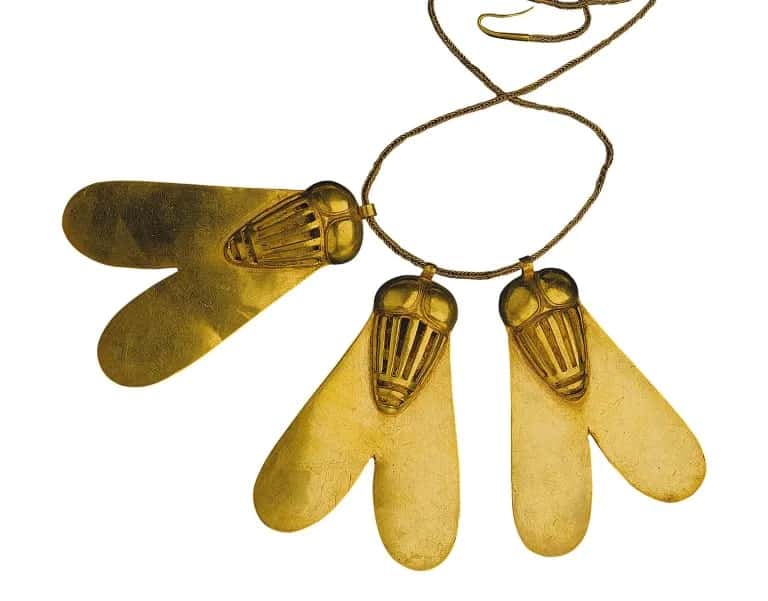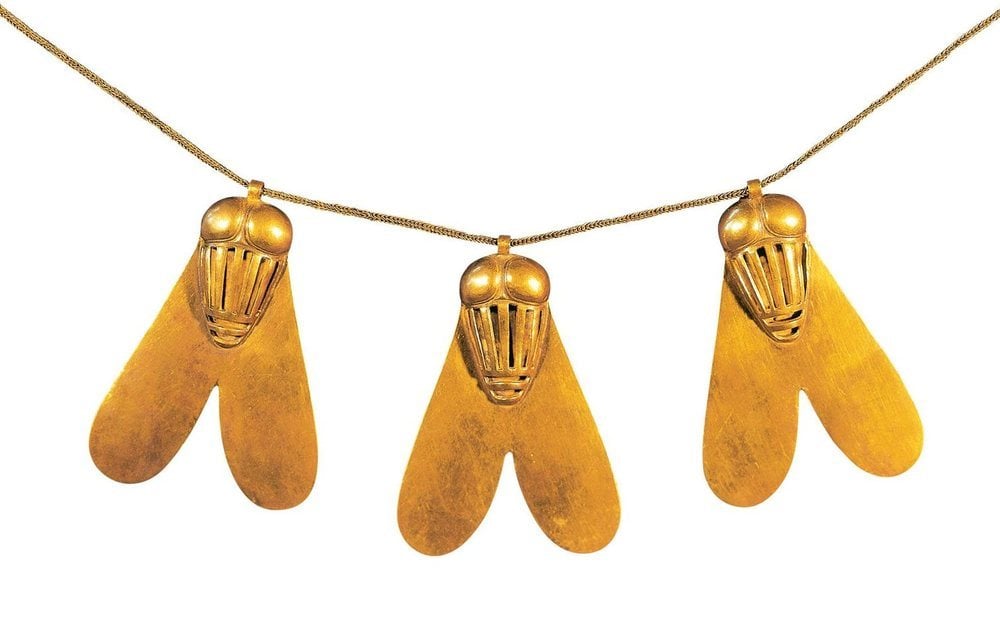The fly had a very special meaning in ancient Egypt. It was famously featured on the necklace found in the tomb of Queen Ahhotep, which was adorned with gold flies. In this article, we will discuss the meaning of the fly in Egypt, why there were necklaces with gold flies, and why Queen Ahhotep had one of them.
The Meaning of the Fly in Ancient Egypt
In ancient Egypt, the fly had a prophylactic and protective value. During the pre-dynastic period, there were stone amulets in the shape of a fly, as well as numerous ceramic paintings of flies.
Later, during the New Kingdom (1550-1070 BC), the Decoration of the Order of the Golden Fly or the Pain Fly appeared. It was the highest decoration that a pharaoh gave to his bravest soldiers.
Normally made of gold, although some have been found in silver, the meaning of the award was that, just as the fly bites animals and persists in annoying them until the end, the soldiers attacked their enemies without rest.
Courage, strength, mastery, insistence, and tenacity were the greatest attributes of these soldiers. In fact, there was a soldier from the time of Thutmose I who received up to six flies for his courage. Flies also appeared in the tombs of various wives of Thutmose III, although the reason for this is unknown.
The Golden Fly Necklace of Queen Ahhotep I
Queen Ahhotep was rewarded by Ahmose with a beautiful necklace full of flies for her bravery in the war against the Hyksos. Ahhotep’s role must have been very important, as this accolade was normally only received by men. In fact, there is no evidence that any other Egyptian queen received this necklace.
The three pendants on the necklace are in the shape of stylized flies with two bulging eyes and openwork bodies. They are made from extremely fine gold, with the smooth wings and chased bodies giving the impression of a living insect. The pendants are hung from short, finely linked chains that attach to the rings fixed between their protruding eyes.
The intricate crafting of the flies is a testament to the skill of ancient Egyptian goldsmiths. The wings of the flies are made from sheet gold upon which a second piece, hammered into a mold to represent the head and eyes, has been soldered. Slots were then cut along the back to represent the body of the fly. As the wearer moves, the pendants are said to flash, capturing the iridescence of a living insect.
The necklace, dating back to the Second Intermediate Period, 17th Dynasty, is estimated to have been created around 1560-1530 BC. It was excavated by A. Mariette in 1859 at Dra’ Abu el-Naga’, West Thebes and is now on display at the Luxor Museum.
The Golden Fly Necklace of Queen Ahhotep I is not only a stunning piece of ancient jewelry, but also a symbol of courage, valor, and the enduring legacy of one of Egypt’s most remarkable queens.










